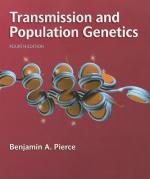|
This section contains 604 words (approx. 3 pages at 300 words per page) |

|
In the decade between 1858 and 1868, two of the greatest of all biological theories were formulated: Darwinian evolution and Mendelian genetics. Each was to have its own profound influence on biological thought. Yet in the early 1900s, the two theories appeared to be on a collision course. One--genetics--was based on the notion that changes occur as the result of combinations of discrete units (genes), and thus take place along a discontinuous path. The other--evolution--analyzed changes in terms of slow, continuous variation from one generation to the next. Many biologists saw no common ground between these two approaches. Bitter arguments developed as to which was the "correct" way to analyze change in living organisms.
One solution to the problem was suggested by the British mathematician George Udney Yule (1871-1951) in 1902. Yule thought that more complex forms of change, such as those studied by evolutionists, might be explainable if...
|
This section contains 604 words (approx. 3 pages at 300 words per page) |

|


